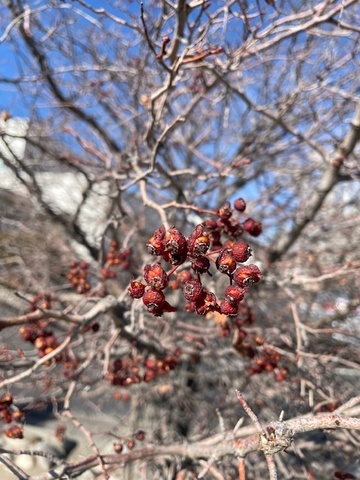
There is a small tree, a cockspur hawthorn, in a yard not far from my house. I drive by it every time I go shopping. It lost its leaves late last fall. Its thin bare branches are taking time to rest until they flourish again in the spring.
Though the tree has no leaves, it does have several clusters of small reddish brown berries that still cling to the branches. They look determined to hang on. It may be easier for them to keep their grip because this winter has been drier and warmer than normal. Even the wind has not dislodged the berries.
Trees have their own trials, just like we do. And just like trees, we sometimes struggle through tough times. I'm amazed that when I look back at those difficult times, the memories don't seem quite so bad. It's as though time took a paintbrush and used gentle brush strokes to soften those memories.
I remember the image of the paintbrush when I experience moments that are painful, exasperating, or sorrowful. If I can make it through those tough times, things usually get better.
I often use my Picture This app to learn the identity of trees, bushes and flowers. It's a great app to have if you want to learn more about nature around you. When I took a picture of the cockspur hawthorn tree, the app gave me its name and told me it looked like it wasn't in the best of health.
Last summer if I'd taken a picture of the tree, those berries would have looked radiantly healthy. It's those radiantly healthy times that we tend to take for granted. It's only when we get sick or have aches and pains or experience a deep loss or disappointment that we wonder if we have the strength and tenacity to hang on. Once we get better, once the aches and pains lessen and the sorrows fade, we start to feel stronger and more hopeful again.
When I drive by the cockspur hawthorn tree, I remember that before too long it will be sprouting new leaves and growing new berries in springtime. On days when I feel less than my best, I remember that if I give myself time to rest, soon I will feel better too.





